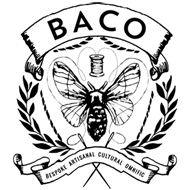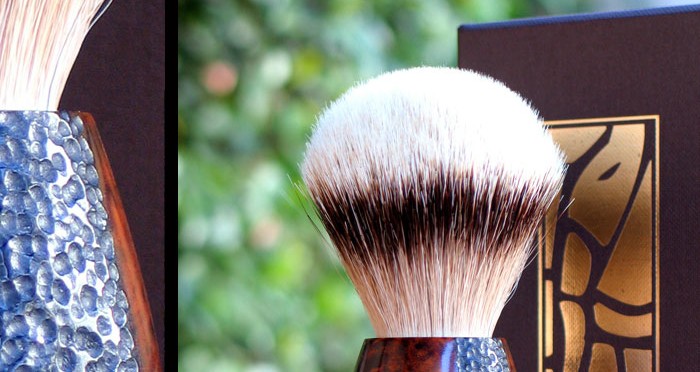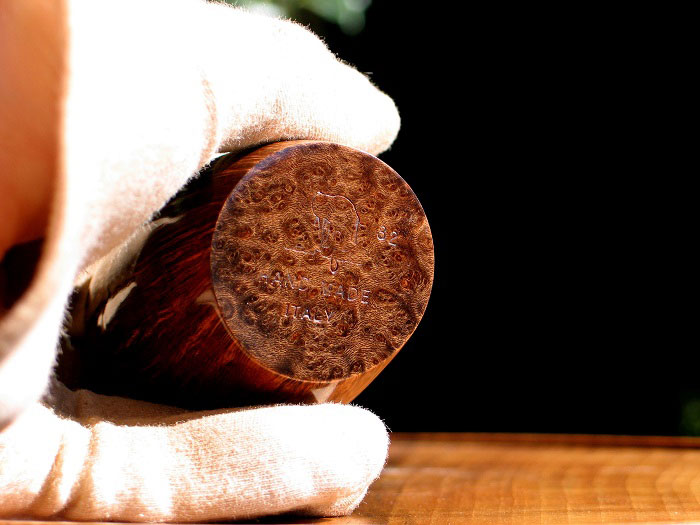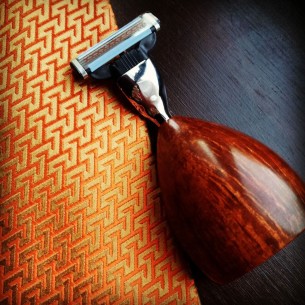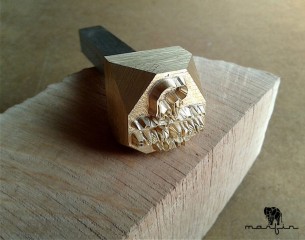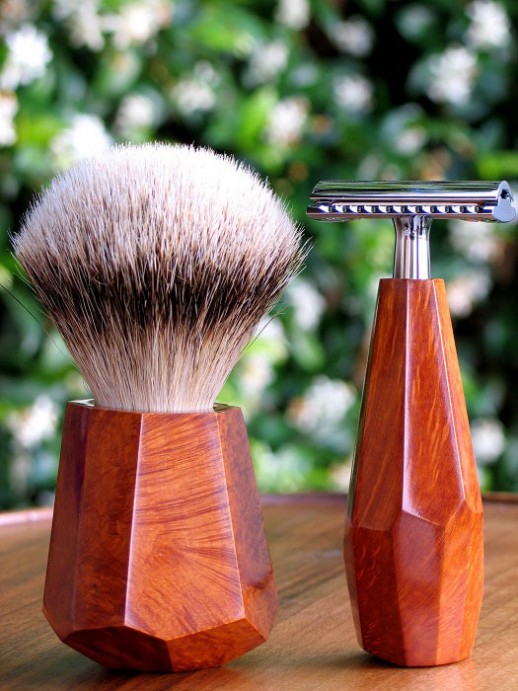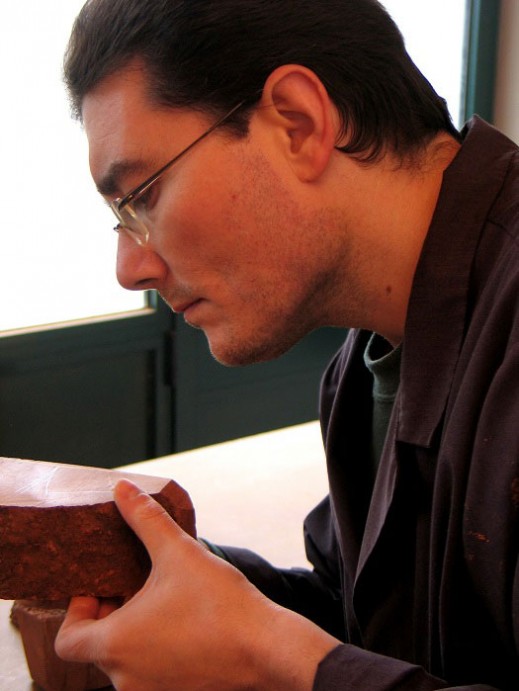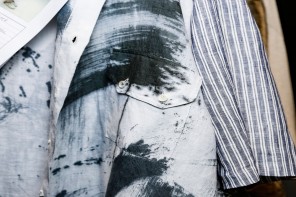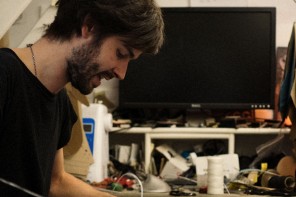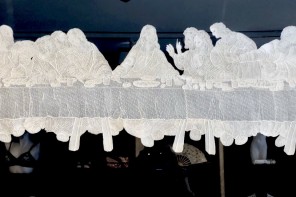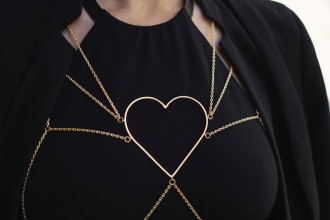Marco Finardi, from the Italian province of Cremona, had been a graphic designer for 20 years when he decided to change gears and become an artisan. Uniting his passion for pipes, woodwork and traditional shaving accoutrements, Finardi created the Marfin brand in 2012, specializing in handcrafted men’s shaving products. His badger hair brushes and razors have garnered an international following. (WHERE TO BUY: Cardano Club ,
BACO contributor Claire Giangrave interviewed Finardi to get his own thoughts on his craft and his brand’s remarkable success.
How did you come up with your shaving brushes?
One evening, as I looked at my tobacco pipe collection, I came up with the idea of putting some Silvertip badger hair in the bowl of a pipe. That’s how I invented my first shaving brushes. My wife started sending pictures of my brushes around and people liked them. In a few weeks I began receiving inquiries and even purchase orders.
Aren’t all shaving brushes practically the same?
Every Marfin brush is an absolutely unique product that cannot be reproduced. I like having things that only I can possess. I wanted to offer to people who shared my passion for traditional shaving a product that is completely unique and created exclusively for them. My clients are not afraid of running into their same brush in someone else’s home. It’s one of a kind.
How do you square traditional artisanal quality with modern society?
Even when I was a graphic designer, I was an artisan. But my tools were computers, laser machines and printers, and I really wanted to revert to the pure artisan. I strongly believe in real artisanship, especially in the Italian tradition of creating objects that express a unique taste and are envied all over the world.
Unfortunately the Italian artisan is a dying breed. Both the artisanal profession and its characteristic know-how are disappearing as fewer and fewer young people enter this field. A few like me are trying to rediscover the pleasure of true artisanship. For me it is a unique satisfaction.
What is involved in making one of your brushes?
The process is both easy and complicated. You begin with the highest quality Italian briarwood. I don’t use cross cuts but only the plateau, or half-moons, which is the finest part of the briarwood.
Once I have the plateau in hand I study it and depending on the variations of the grain in the wood I choose how I want to create my brush handle. I cut the wood and begin to work with polishes, rasps and emery cloths. This process can last up to four hours.
I color the handle the same way you would color a tobacco pipe, that is, with natural pigments. I then soak the handle in citrus incensed Tung Oil, one of the few truly organic oils left. After two weeks I polish it with pure Carnauba wax.
Where do you draw inspiration for your work?
The principal inspiration comes from the wood itself. I look at the shape, the veins and the variations in the wood. Often I have some shapes in mind. I prefer sinuous and natural shapes and I don’t like canonical shapes.
You have to stand out.
HEADQUARTERS: Cremona
WHERE TO BUY: Cardano Club
ISSUE NO. 23 The Barber Shop Revival: THE EDITOR’s EXPERIENCE: Antica Barbieria Colla, Cedes: High-End Accessories for Gentlemen, PRORASIO: A Modern Spin on the Old Barber, Marco Finardi of Marfin: Opting for the Artisan Life , Al Pascia': Pipes to Leather Goods , F. Hammann 1864’s 5th Generation
